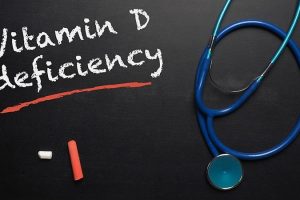Low Vitamin D Link With Obesity, Overweight Among Men

The study covered in this summary was published in ResearchSquare as a preprint and has not yet been peer reviewed.
Key Takeaways
-
An analysis of data from Guilan province in northern Iran, drawn from the Prospective Epidemiological Research Studies in Iran (PERSIAN) study, found that men with overweight or obesity were significantly more likely to have inadequate serum 25-hydroxyvitamin D (referred to as vitamin D) levels of < 20 ng/mL (50 nmol/L), compared to men with normal weight, independent of demographic and lifestyle factors.
-
This association was not seen in women.
Why This Matters
-
About half of the Iranian population has vitamin D insufficiency.
-
The study suggests that clinicians could consider determining serum vitamin D levels in men with overweight or obesity to check if these levels are too low.
Study Design
-
The researchers analyzed data from 9520 men and women who lived in Guilan and participated in the PERSIAN study and had complete demographic and lifestyle data as well as serum vitamin D levels and body mass index (BMI) values, collected between October 8, 2014, and January 20, 2017.
-
Participants were classed as having vitamin D deficiency, < 12 ng/mL (< 30 nmol/L); insufficiency,12 to < 20 ng/mL (30 to < 50 nmol/L); or sufficiency, ≥ 20 ng/mL (50 nmol/L).
-
They were also classed as being underweight (BMI < 18.5 kg/m2), normal weight (BMI 18.5-24.9 kg/m2), overweight (BMI 25-29.9 kg/m2), or having obesity (BMI ≥ 30 kg/m2).
Key Results
-
About half of the overall study population (50.4%) had serum vitamin D sufficiency.
-
The population was roughly split between individuals with normal weight (27.7%), overweight (39.7%), or obesity (32.6%).
-
Compared to participants with inadequate serum vitamin D levels, those with sufficient levels were older (mean age, 53 vs 51 years), more were male (48% vs 45%), current smokers (26% vs 23%), and physically active, and had a lower mean BMI (27.9 vs 28.3 kg/m2) (all P < .05).
-
Compared to participants with overweight or obesity, those with normal weight were older, and more were male, current smokers, consumed alcohol (22% vs 15%), and lived in an urban area (49% vs 44%), and they were more physically active (all P < .05).
-
Compared to men with normal weight, men with overweight were more likely to have vitamin D inadequacy (adjusted odds ratio [OR], 1.2; P = .03), as were men with obesity (adjusted OR, 1.4; P = .001), after adjusting for age, sex, place of residence, education, physical activity, alcohol consumption, and smoking.
-
There were no significant associations between BMI and serum vitamin D levels among women.
Limitations
-
This was a cross-sectional study, so it cannot determine a causal relationship between BMI and serum vitamin D.
Disclosures
-
The study did not receive commercial funding.
-
The authors report no relevant financial disclosures.
This is a summary of a preprint research study “Gender-related differences in the association of serum levels of vitamin D with body mass index in northern Iranian population: The PERSIAN Guilan Cohort Study (PGCS)” by researchers from Guilan University of Medical Sciences, Iran. Preprints from ResearchSquare are provided to you by Medscape. This study has not yet been peer reviewed. The full text of the study can be found on researchsquare.com.
Source: Read Full Article



